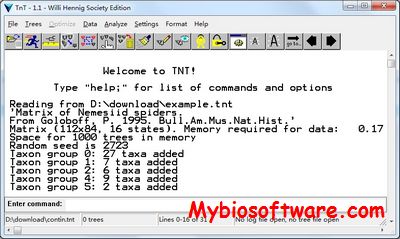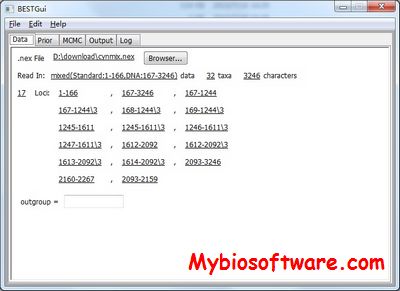TNT 202106
:: DESCRIPTION
TNT (Tree Analysis using New Technology) is a program for phylogenetic analysis under parsimony , as well as extensive tree handling and diagnosis capabilities.
::DEVELOPER
:: SCREENSHOTS
:: REQUIREMENTS
- Windows / Linux / MacOsX
:: DOWNLOAD
:: MORE INFORMATION
Citation
Giribet G.
“TNT: Tree Analysis Using New Technology.”.
Syst Biol. 2005;54:176-178.







